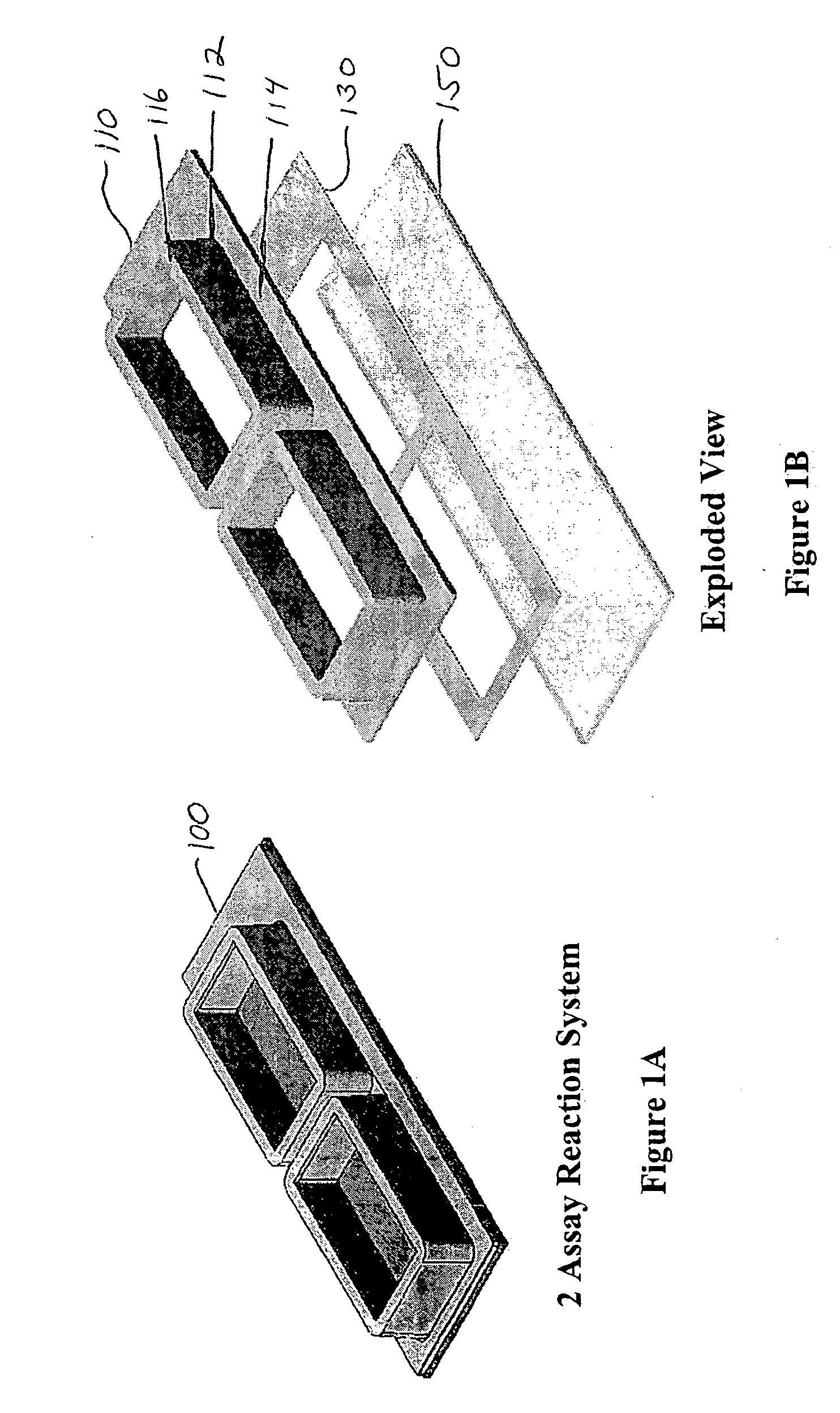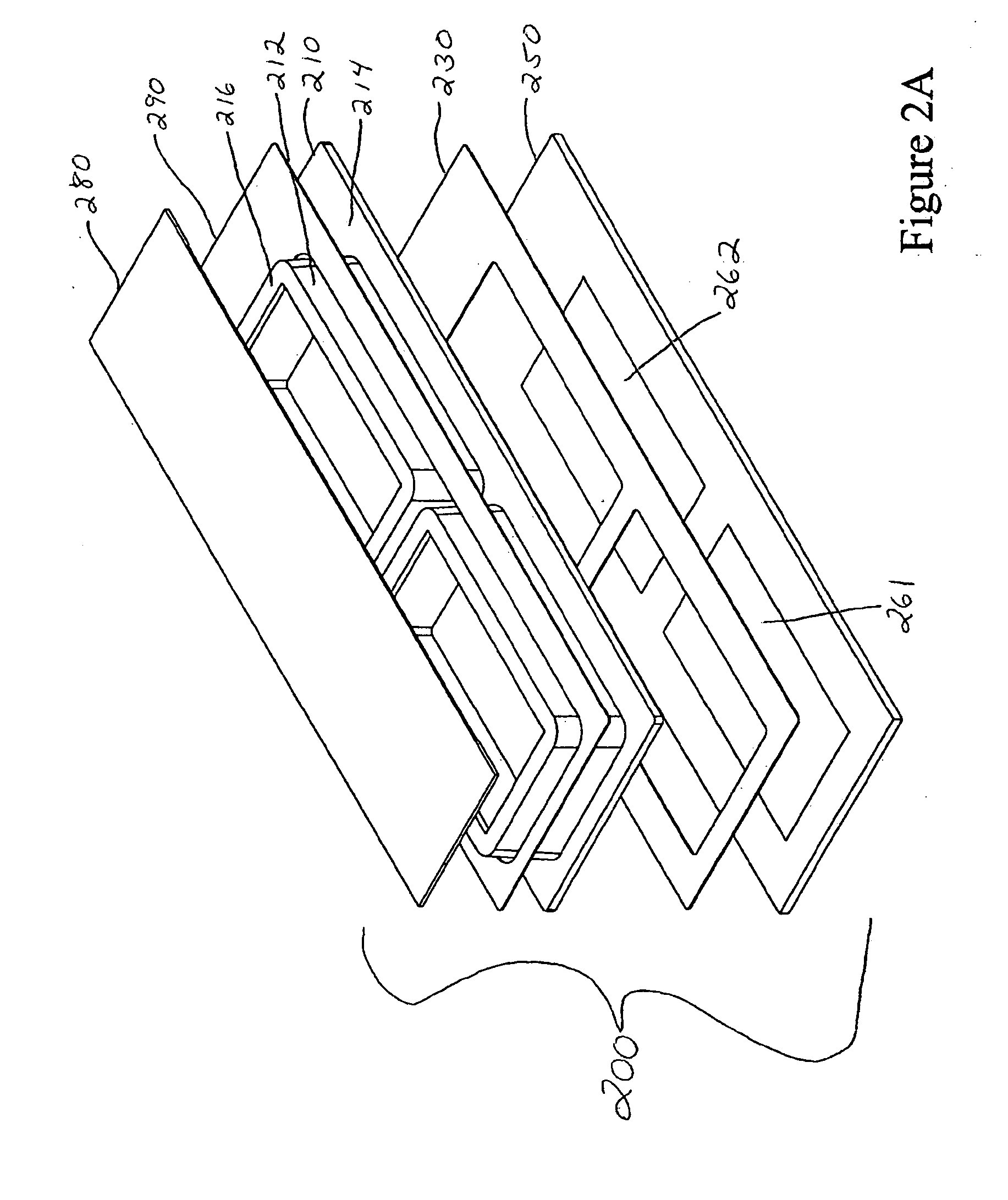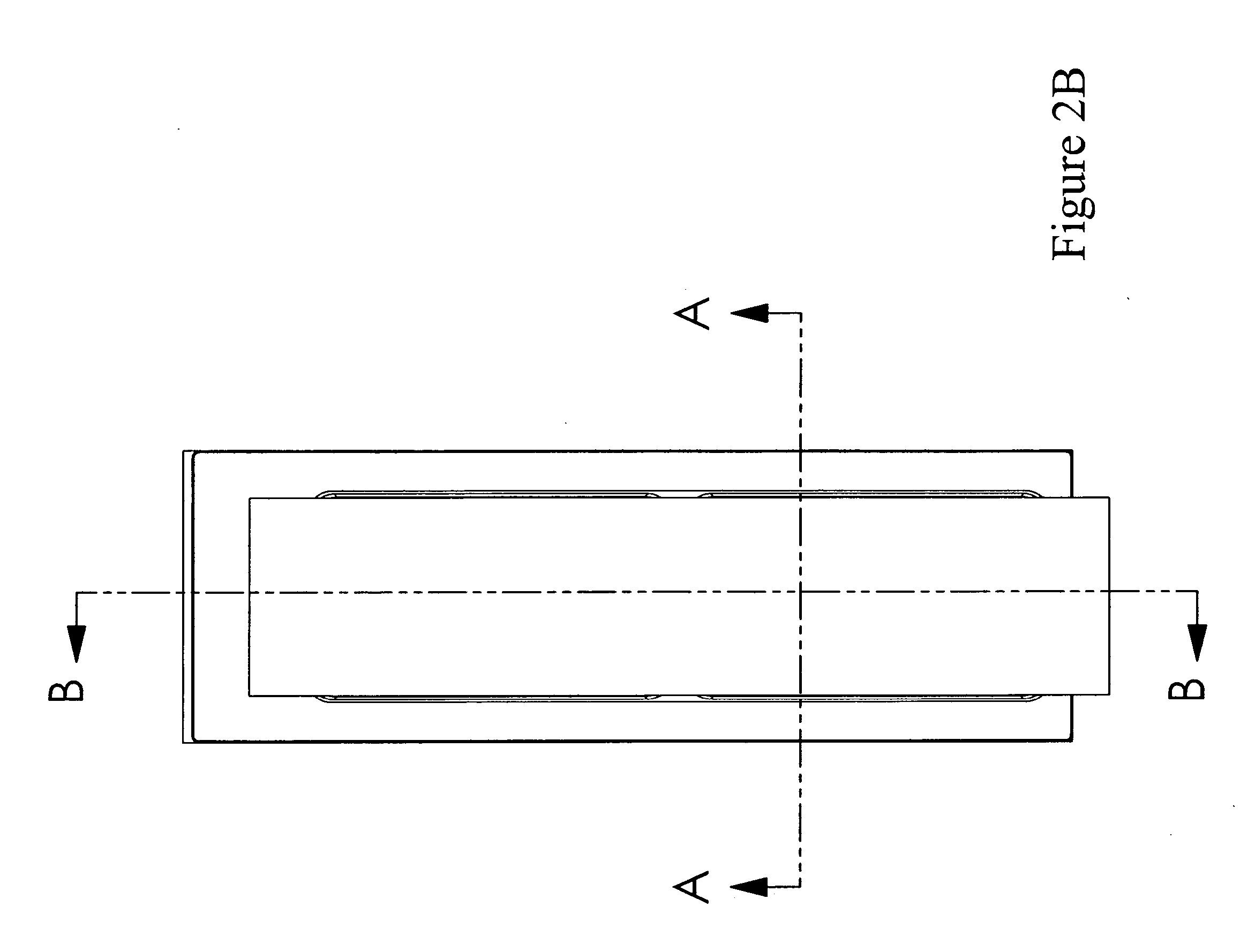Reaction chamber
- Summary
- Abstract
- Description
- Claims
- Application Information
AI Technical Summary
Benefits of technology
Problems solved by technology
Method used
Image
Examples
example 1
[0074] One example is illustrated in FIG. 1A, with an exploded view in FIG. 1B. The two assay reaction chamber system 100 has two assay chambers defined by a semi-rigid, thin-walled case 110, perimeter adhesive layer 130, and substrate 150. The thin-walled case has two thin-walled 112 openings, a flat, thin bottom flange 114, and rims 116 at the upper end of the thin-walled openings.
[0075] Another example is illustrated in FIG. 2, with several views displayed in FIGS. 2A through 2D. The two assay reaction system 200 has two assay chambers defined by a semi-rigid, thin-walled case 210, perimeter adhesive layer 230, and substrate 250 having arrays 261 and 262. The thin-walled case has two thin-walled 212 openings, a flat, thin bottom flange 214, and rims 216 at the upper end of the thin-walled openings. A top sealing strip 280 covers the opening of the thin-walled case to prevent evaporation of reaction contents. Also shown is a sheet 290 on top of the bottom flange of the case which...
PUM
| Property | Measurement | Unit |
|---|---|---|
| Thickness | aaaaa | aaaaa |
| Size | aaaaa | aaaaa |
| Flexibility | aaaaa | aaaaa |
Abstract
Description
Claims
Application Information
 Login to View More
Login to View More - R&D
- Intellectual Property
- Life Sciences
- Materials
- Tech Scout
- Unparalleled Data Quality
- Higher Quality Content
- 60% Fewer Hallucinations
Browse by: Latest US Patents, China's latest patents, Technical Efficacy Thesaurus, Application Domain, Technology Topic, Popular Technical Reports.
© 2025 PatSnap. All rights reserved.Legal|Privacy policy|Modern Slavery Act Transparency Statement|Sitemap|About US| Contact US: help@patsnap.com



